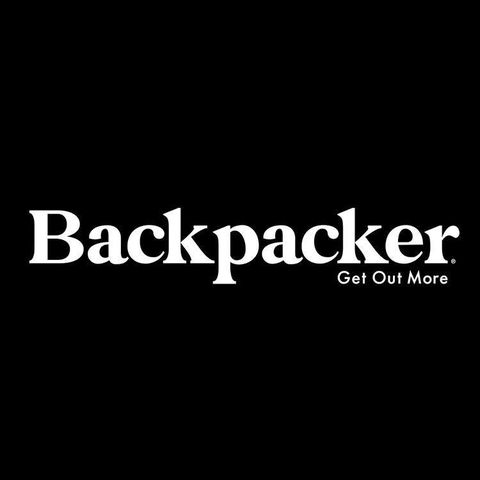



If you’re an ultralighter, chances are you’ve heard of Ultra, a unique plastic material often utilized in backpacks that’s stronger than steel. And while Ultra has slowly gained dominance in the ultralight market over the last two years, it already has a new competitor making serious claims about its weight and strength: Graflyte. The new material, made by Victoria, B.C.-based startup Aluula Composites, is lighter than Ultra, and thanks to it’s unique construction, might change the way ultralight packs are made in the future.
The superfabric hasn’t hit the market yet, but ultralight industry trailblazer Durston Gear is already taking preorders for a 30-liter pack that utilizes the fabric, and Aluula says more brands, including Arc’teryx, will come onboard within the next year. So how does Graflyte compare to Ultra? Here’s what we know so far.
Both fabrics are woven using ultra-high-molecular-weight polyethylene, or UHMWPE. In the case of Ultra, that weave is about 67 percent UHMWPE and 33 percent polyester. That woven face fabric is then glued to a polyester film. In contrast, Graflyte uses a 100 percent UHMWPE weave that’s heat-bonded to a polyethylene (PE) film. According to Dave Westwood, Aluula’s Director of Partner Innovation & Design, the heat-bonding process—which Aluula calls fusing—makes all the difference. Not only does it ensure a solid bond between the two layers of fabric (Aluula claims its fabric won’t delaminate, a concern for some Ultra packs), but it also could change how packs are constructed. Graflyte can be heat-bonded to itself, rather than sewn, or even “thermoformed” to create 3D structures without using separate panels of fabric.
“If you want a waterproof bag, right now you have to cut it, sew it, and seam tape it,” says Westwood. “As you get more advanced bonding techniques, that’s going to change. I think our fabric is a step closer to that.”

In terms of abrasion strength-to-weight ratios, there’s no testing data currently available to the public that would allow us to compare Ultra to Graflyte. (Although Westwood says Aluula’s own lab tests have shown superior performance.) What we do know for sure is that Graflyte is lighter. Ultra 200, the most common weight of the fabric, tips the scales at 3.5 ounces per square yard, while Ultra 100 is 3 ounces per square yard. Like Ultra, Graflyte will be available in multiple fabric weights. The version that is likely to be most widely used, and the one seen in the Durston Wapta 30, weighs in at 2.89 ounces per square yard. According to Westwood, the lightest stock version of the fabric will weigh just 1.53 ounces per square yard, and be used in accessories like stuff sacks. Even lighter versions might be possible, but for now, Aluula doesn’t consider Graflyte a potential tent-weight fabric.
Graflyte’s full PE construction also opens a new door that hasn’t been available for UHMWPE fabrics in the past: recycling. Because Graflyte is a mono-material, it’s able to be recycled, while fabrics like Ultra and Dyneema—which contain multiple materials—are not. “What we’re proposing is shredding the fabric into ‘fiber-reinforced plates,’” says Westwood. Those plates could be used to make things like backpack suspension systems or repurposed for use in other industries.
For customers, there’s another big difference between Ultra and Graflyte to note. Ultra is freely available for anyone to purchase—outdoor fabric retailers like Ripstop By the Roll carry Ultra 200 by the yard on their websites. Aluula instead plans to seek out partnerships with brands, similar to how Gore-Tex operates with its proprietary technologies. Graflyte won’t be available from online fabric retailers, and not every cottage brand working out of a garage will have access to the fabric. “We want to have a really solid group of partners that we can develop with,” says Westwood. “Our launch process is going to be measured, and we want to make sure it’s right when it goes out the door.”
It’s worth noting, though, that Aluula has demonstrated a willingness to work with small outfits as well as the big brands. In addition to working with Durston Gear (which, while exploding in popularity, is not a big brand), they’ve also partnered with two niche brands in the bikepacking space, Rockgeist and Revelate Designs, as well as Alpacka Rafts. Still, the partnership plan means that there will likely be fewer brands working with Aluula than there are using Ultra or Dyneema, which could limit buying options for consumers.
And while the new buzz is all about Graflyte, it’s not the only material from Aluula that’s raising eyebrows in the outdoor industry. Durltye is another Aluula fabric that might find its way into backpacking gear. It shares the same 100 percent UHMWPE face fabric as Graflyte, but upgrades strength and durability by subbing in a UHMWPE film instead of a PE film. Westwood says this heavier construction makes the fabric far stiffer, and more appropriate for mountaineering packs and other high-abrasion uses like bikepacking bags and packrafts, rather than ultralight backpacks.
Where Aluula’s new offerings fall in the increasingly competitive ultralight arms race remains to be seen, but we’ll be field-testing the new materials as soon as we can get our hands on it. Stay tuned.

